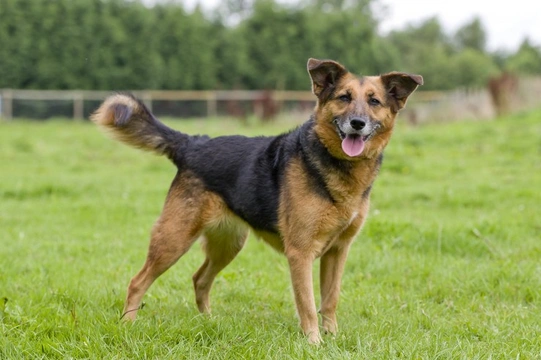
Harvest mites and dogs - An Autumn allergen
Most dog owners associate spring and the start of the summer with allergy season, whether that be in people or dogs. While it is certainly true that both dogs and people that are prone to allergies do tend to suffer most in the spring, autumn is another peak for certain seasonal allergies, and one of these is harvest mites.
However, identifying harvest mites and being able to attribute allergy symptoms to these mites can be a challenge, as not all dogs will be affected by them every year, and the mites themselves can be very hard to spot.
If your dog appears to have itchy, irritated skin, is developing hotspots from bothering areas of their bodies or seems to be chewing their feet a lot, they may have harvest mites. In this article, we will look at harvest mites in dogs in more detail, covering what they are, how they affect dogs, how to identify them, and what can be done about them. Read on to learn more.
What are harvest mites?
Harvest mites are spall, parasitic mites with the Latin name of Trombicula autumnalis, which go through a life cycle of egg, larvae, nymph and adult. It is the larvae stage of the life cycle that can cause a problem for dogs, and harvest mites during the other stages of their development don’t pose any threat to pets.
How do dogs catch them?
The larvae of the harvest mites climb up blades of grass and overhanging vegetation, and transfer to your dog’s skin on contact, where they congregate in swarms, seeking out parts of the body that are the warmest, least densely furred and have the thinnest skin – such as between the toes, in the armpits, and around the stomach and genitals.
Harvest mites tend to stay on the dog’s body for a couple of days, and once the larvae have fed, they then drop back off your dog’s body and continue to the nymph stage of their lifecycle. However, if you live in an area where harvest mites are rife and prolific, your dog may potentially pick up a new cargo of larvae when they go out for their walks.
The larvae of the harvest mites can be hard to spot because they are so small and discreet, but their bright orange colouration means that they can sometimes be picked out with the naked eye on the skin. However, just because you can’t see any harvest mites on your dog does not mean that they are not the cause of your dog’s reaction – you may not be able to see them, or the larvae may have already dropped off your dog.
How do they affect dogs?
The harvest mite larvae feed on the skin of the dog by injecting a liquifying substance under the skin, and consuming the resulting nutrients. The substance that the larvae inject under the skin in order to feed can be itchy and irritating to the dog’s skin, which causes them to lick, chew, scratch and generally bother at the affected area, which can make it inflamed, red and sore.
Identifying harvest mites
If your dog is itchy, irritated or appears to be going through a flare-up of an allergy or general irritation in the autumn, harvest mites are one of the first potential culprits that your vet will consider during the months of around August to the start of November, depending on how the weather conditions have affected harvest mite populations in any given year.
If you have spotted the larvae on your dog or if your vet can find traces of the larvae, this will of course lead to a fairly definitive diagnosis, although skin scrapings may be required, albeit this is not always definitive in and of itself.
Sometimes, your vet will need to perform a differential diagnosis to rule out other potential causes of the problem, and if harvest mites are the only remaining option or appear to be the most viable cause of the problem, they may begin to treat your dog as a result of this and look for improvement of the symptoms to confirm diagnosis.
What can be done about harvest mites?
If your dog is carrying harvest mites, your vet will usually advise using an antiparasitic shampoo, spray or other treatment that is effective against harvest mites to eradicate the mites that are present on your dog, ensuring that it is worked right between the toes and into other hard-to-reach areas. However, because it is virtually impossible to prevent harvest mite larvae attaching itself to your dog when the season and conditions are right, affected dogs may need to take antihistamine tablets during harvest mite season, to reduce the irritation and other symptoms that harvest mites can cause.
If your dog has made their skin very sore or damaged from the itching, your vet may also check for infection and prescribe antibiotics if necessary, or in some cases, prescribe a course of steroidal medication to promote healing of the skin.



